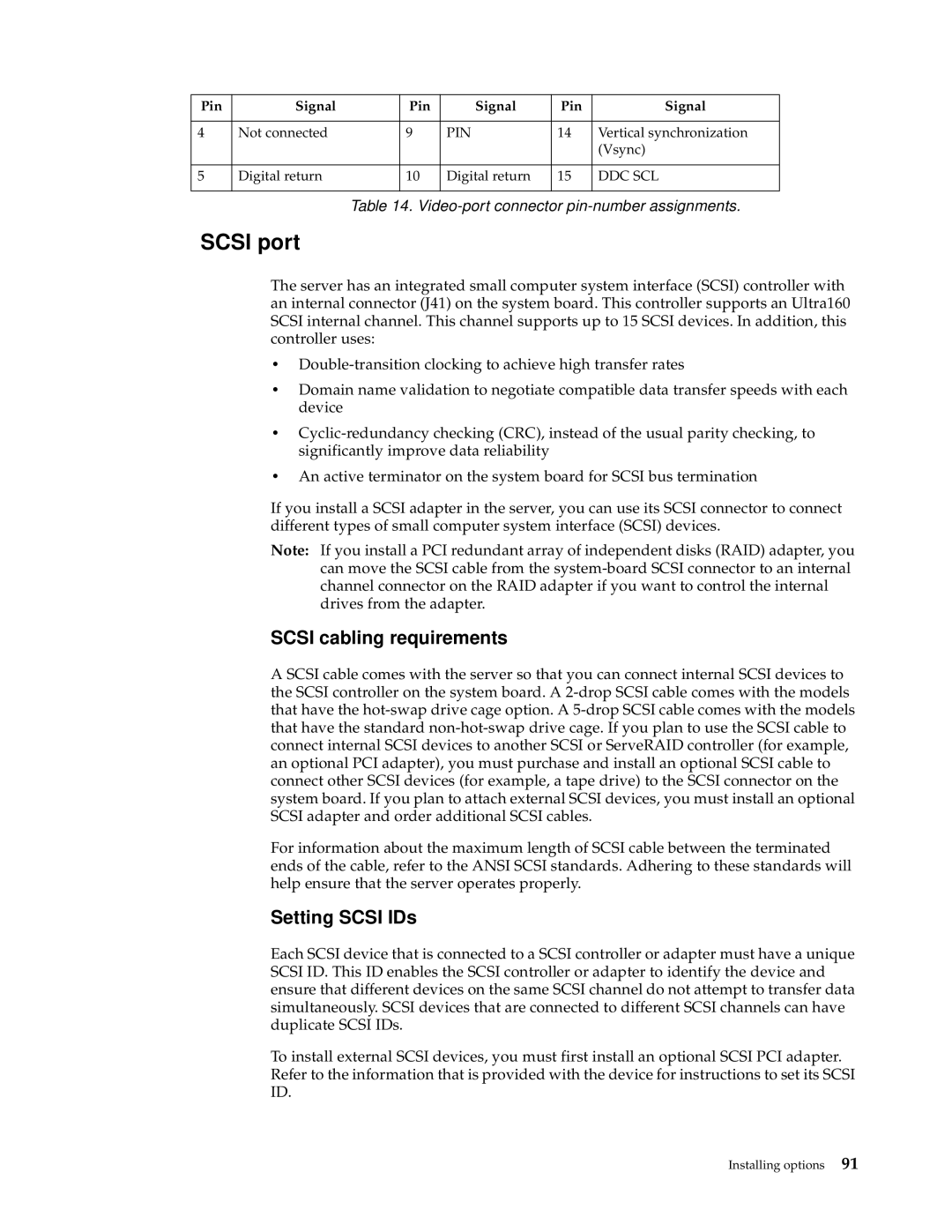Pin | Signal | Pin | Signal | Pin | Signal |
|
|
|
|
|
|
4 | Not connected | 9 | PIN | 14 | Vertical synchronization |
|
|
|
|
| (Vsync) |
|
|
|
|
|
|
5 | Digital return | 10 | Digital return | 15 | DDC SCL |
|
|
|
|
|
|
Table 14. Video-port connector pin-number assignments.
SCSI port
The server has an integrated small computer system interface (SCSI) controller with an internal connector (J41) on the system board. This controller supports an Ultra160 SCSI internal channel. This channel supports up to 15 SCSI devices. In addition, this controller uses:
•
•Domain name validation to negotiate compatible data transfer speeds with each device
•
•An active terminator on the system board for SCSI bus termination
If you install a SCSI adapter in the server, you can use its SCSI connector to connect different types of small computer system interface (SCSI) devices.
Note: If you install a PCI redundant array of independent disks (RAID) adapter, you can move the SCSI cable from the
SCSI cabling requirements
A SCSI cable comes with the server so that you can connect internal SCSI devices to the SCSI controller on the system board. A
For information about the maximum length of SCSI cable between the terminated ends of the cable, refer to the ANSI SCSI standards. Adhering to these standards will help ensure that the server operates properly.
Setting SCSI IDs
Each SCSI device that is connected to a SCSI controller or adapter must have a unique SCSI ID. This ID enables the SCSI controller or adapter to identify the device and ensure that different devices on the same SCSI channel do not attempt to transfer data simultaneously. SCSI devices that are connected to different SCSI channels can have duplicate SCSI IDs.
To install external SCSI devices, you must first install an optional SCSI PCI adapter. Refer to the information that is provided with the device for instructions to set its SCSI ID.
